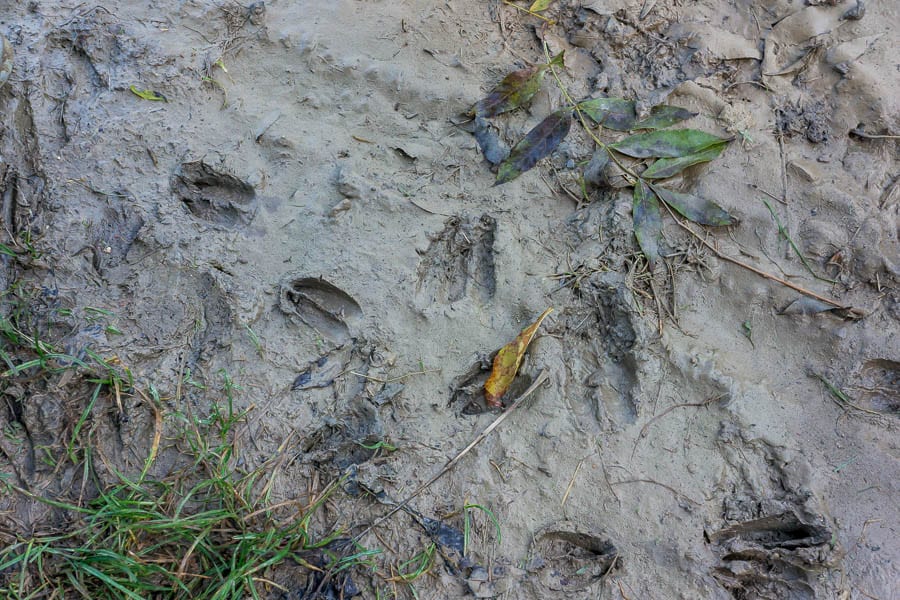 On nature walks we constantly spot animal footprints and can see where they roam when we’re not about. We’ve also been on a nature detective hunt following badger trails. Finally we decided it was time to learn how to make casts of animal tracks so we could find out who had been sharing those same trails with us. Many animals only appear at dusk, dawn or during the night so the only traces of them are the footprints they leave behind.
On nature walks we constantly spot animal footprints and can see where they roam when we’re not about. We’ve also been on a nature detective hunt following badger trails. Finally we decided it was time to learn how to make casts of animal tracks so we could find out who had been sharing those same trails with us. Many animals only appear at dusk, dawn or during the night so the only traces of them are the footprints they leave behind.
We went on an expedition to search for a variety of tracks near our house and then make casts of them.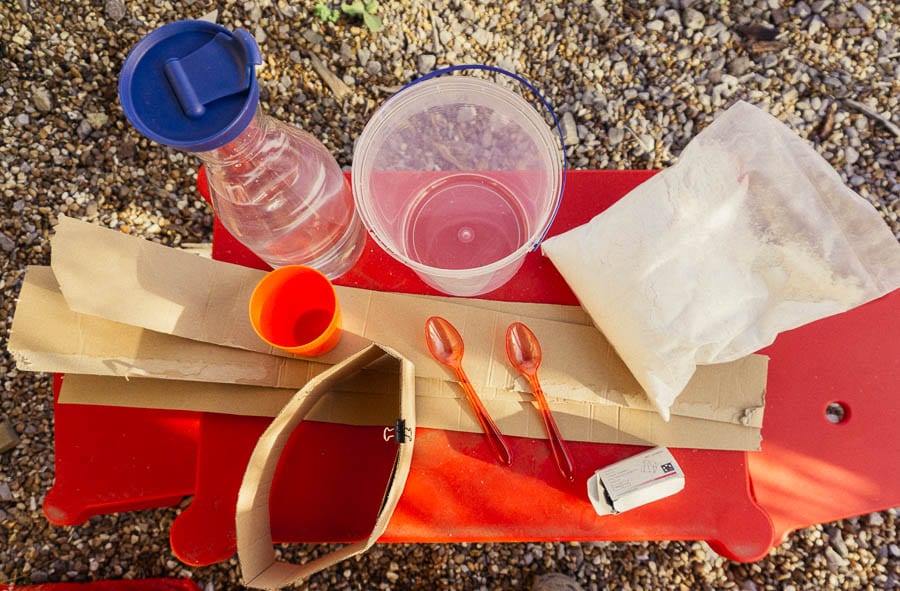
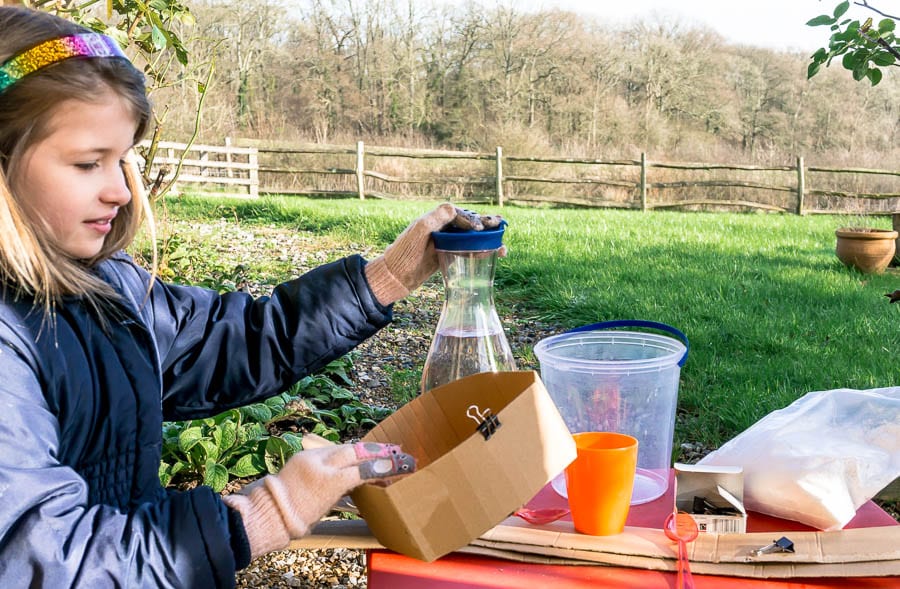
What’s needed:
- Plaster of Paris
- Cardboard strips (Approximately 20 to 30 cms length x 5 to 10 cms width) (You could also cut rings out of large drink cartons)
- Paper clips (or fold down clips)
- Mixing bowl
- Bottle of water
- Spoons
- Plastic or paper cup
- Paper towels
- Newspaper and bag
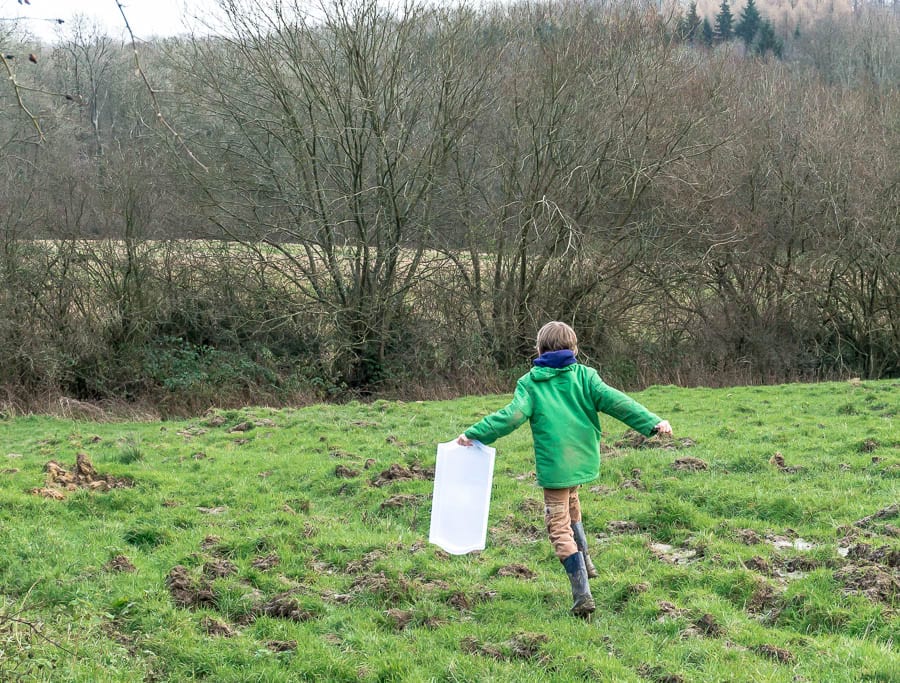
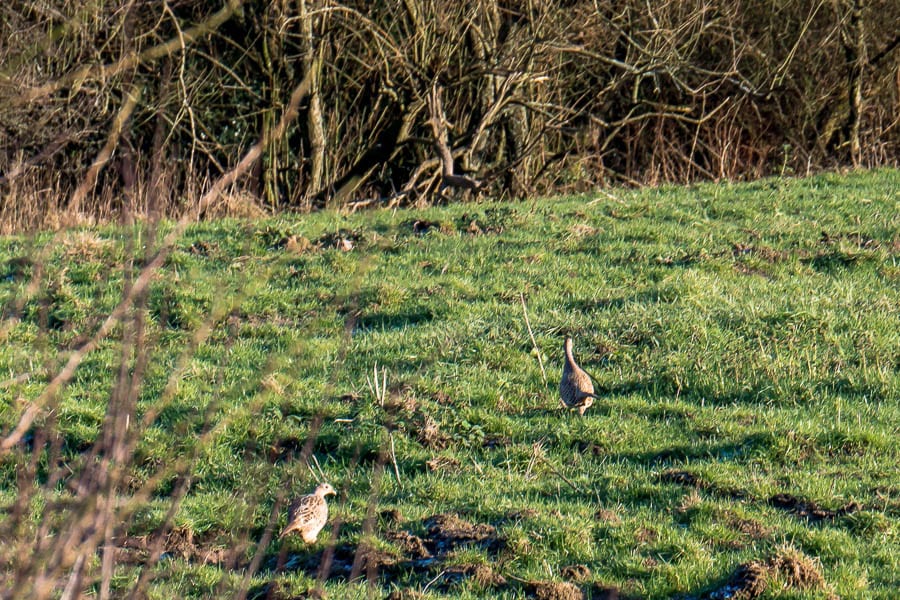
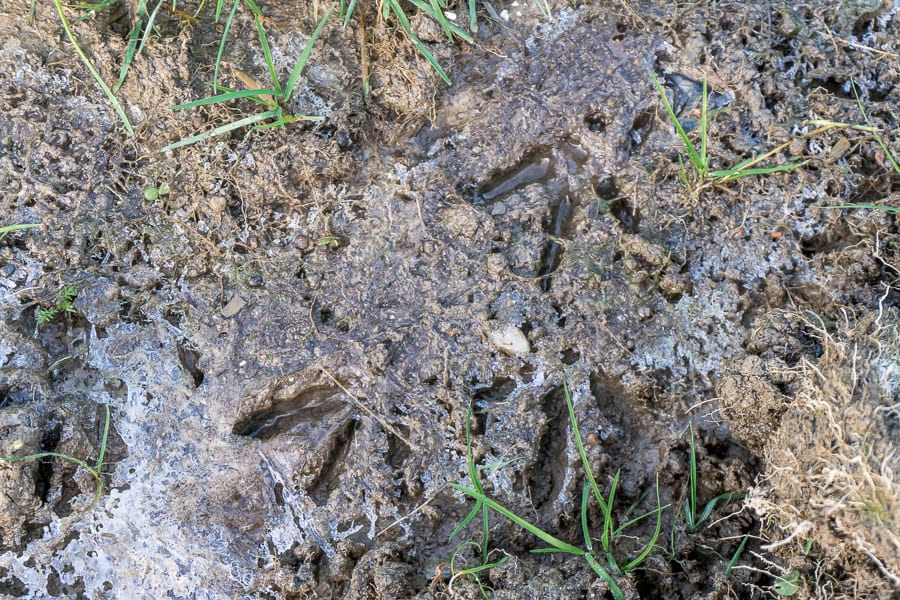 Find some tracks
Find some tracks
Off we went to the edge of a nearby meadow which was muddy and a frequent route of our local wildlife. Often deer pass right through this area on their way in and out of the woods. Recently there have been lots of pheasants around.
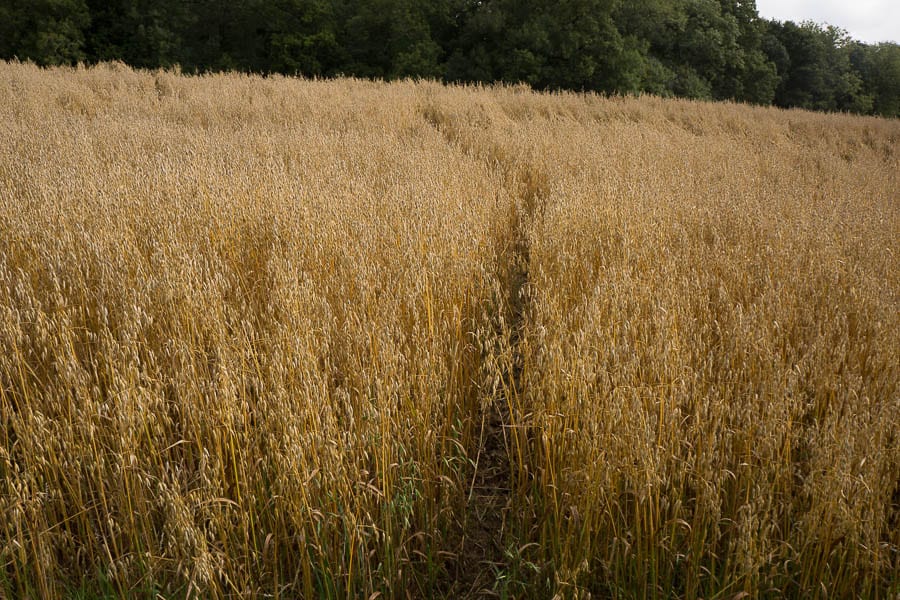
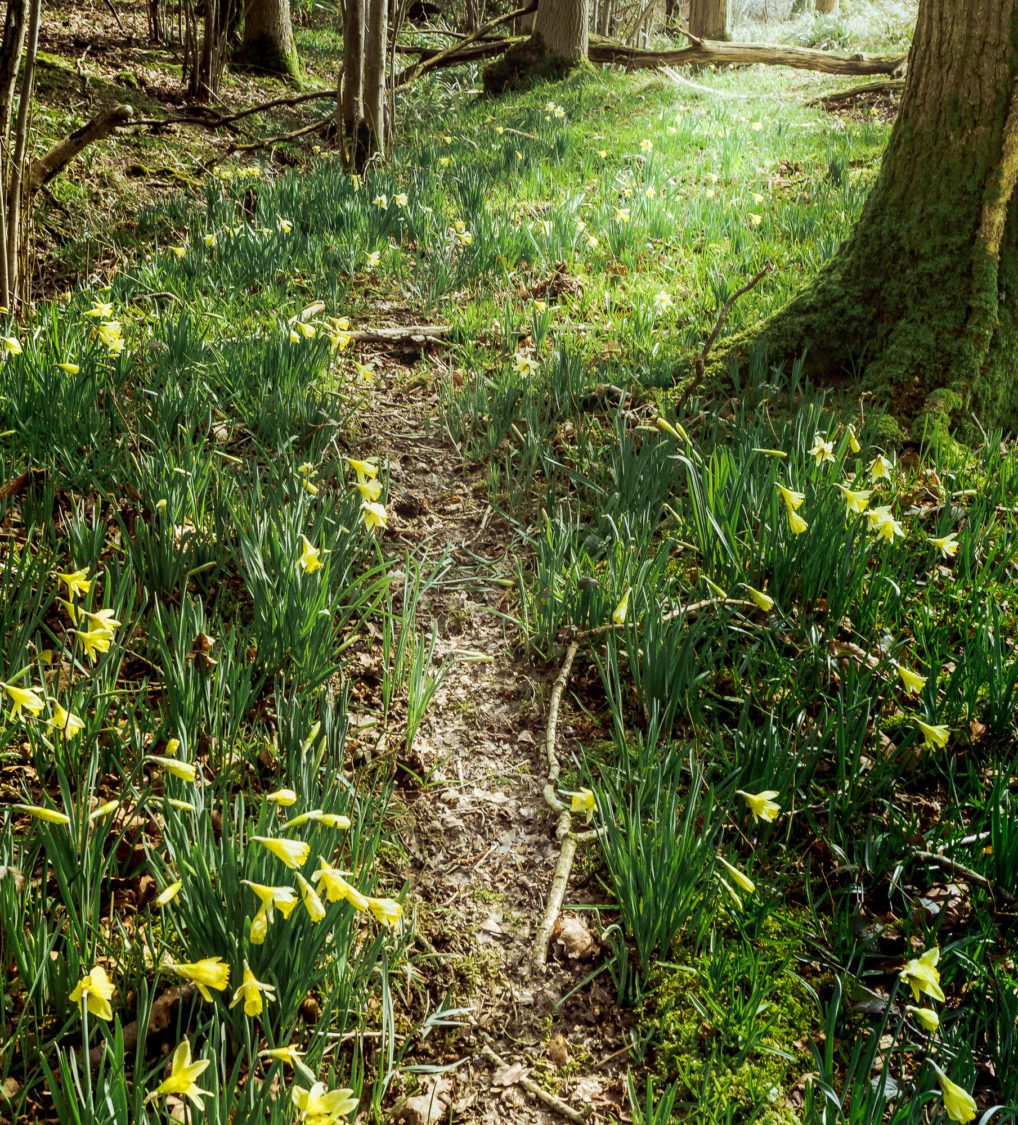
We initially chose two different animal tracks to cast. The first was a clear imprint from a pheasant in the mud. Nearby we found small deer tracks.
- Other good places to spot tracks are near streams and ponds which animals might visit at night.
- In the woods we often see trails made by animals through the trees.
- Another place to look for tracks is where a deer or animal trail goes through a field and enters a wood by its edge.
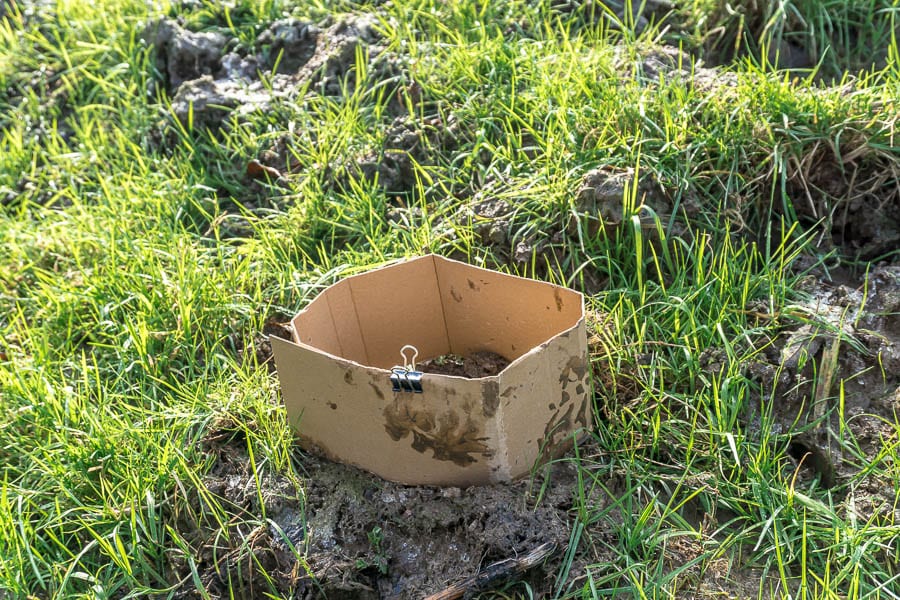
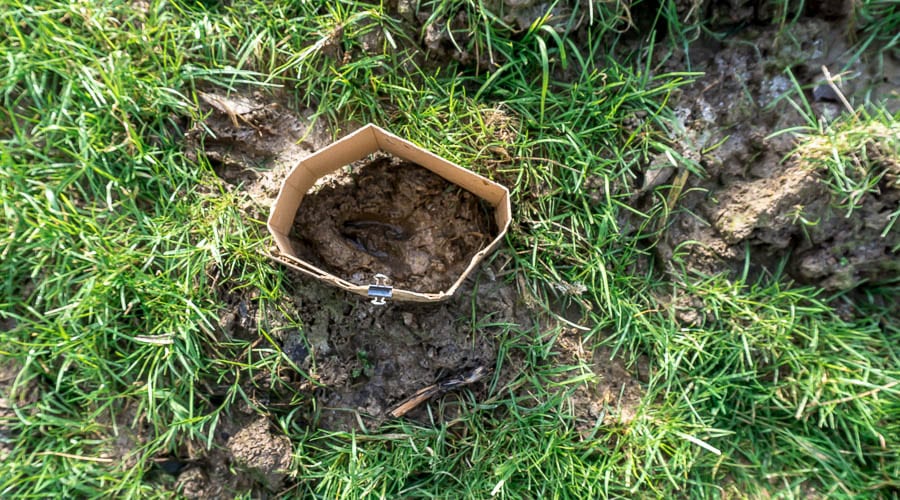 Make cardboard rings to surround tracks
Make cardboard rings to surround tracks
- First we cleared some of the grass and any leaves near the footprint.
- We then used a fold down clip to make a cardboard ring before putting it over the track. We used fold down clips as they’re strong but paperclips are a perfect and often recommended alternative.
- Gently we pushed the ring into the mud so that the track was in the centre.
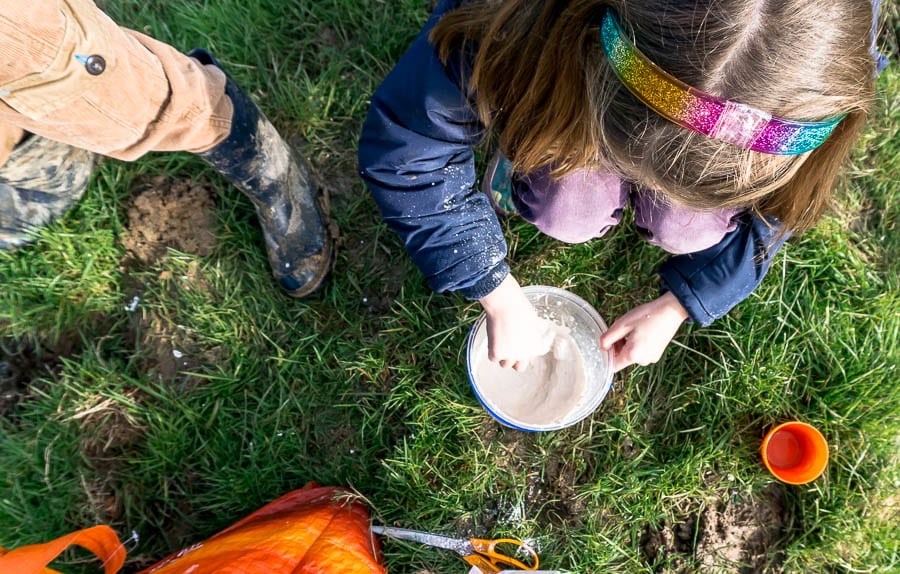 Mix Plaster of Paris and water then fill ring
Mix Plaster of Paris and water then fill ring
- Next we poured some water into our mixing bowl measuring with our cup before slowly mixing in plaster of Paris with a spoon.
- We kept adding and mixing water and plaster of Paris until we had a decent amount of smooth but not way too runny plaster. Luce and Theo said it looked just like pancake batter.
- We used a spoon to fill the bottom of the cardboard ring with our plaster of Paris ‘batter.’ You can also pour the plaster into the ring if it’s runny enough.
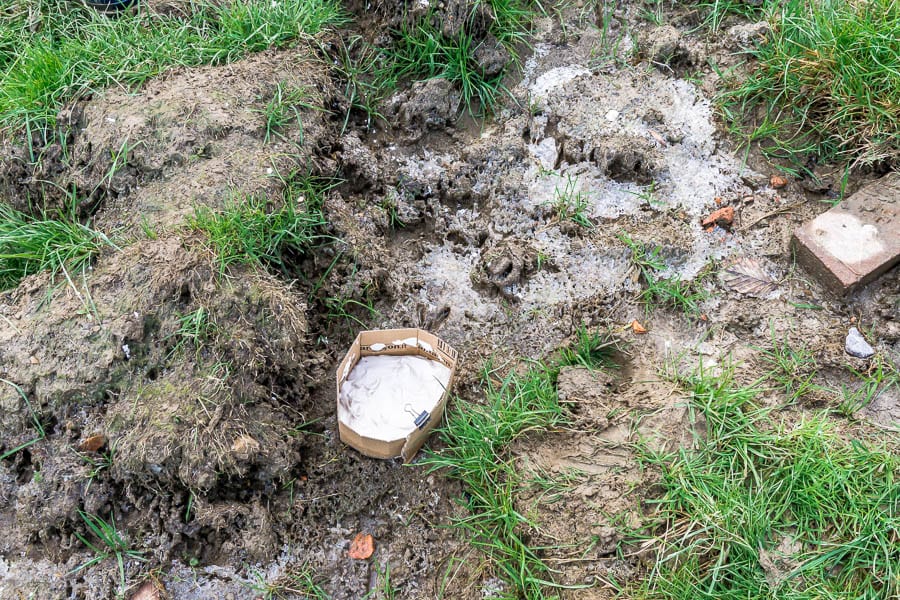 Let plaster set
Let plaster set
Now we needed to wait for the plaster to set. This can take from 15 to 45 minutes depending on the weather.
 Since we had some plaster of Paris left over, Luce and Theo wanted to find another animal track to cast. Near our garden fence we found some tracks in the muddy grass. Luce and Theo were excited as maybe it was a fox footprint? We’d seen a fox hunting in this patch and no dogs ever came here. But it looked like an animal with long claws…My kids would have to be wildlife detectives by identifying the animal from the final cast!
Since we had some plaster of Paris left over, Luce and Theo wanted to find another animal track to cast. Near our garden fence we found some tracks in the muddy grass. Luce and Theo were excited as maybe it was a fox footprint? We’d seen a fox hunting in this patch and no dogs ever came here. But it looked like an animal with long claws…My kids would have to be wildlife detectives by identifying the animal from the final cast!
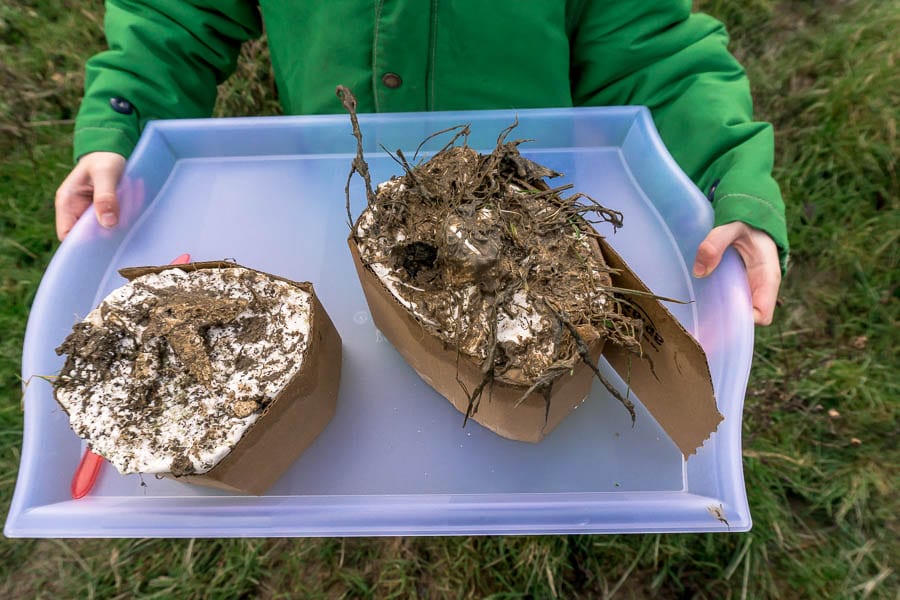 Lift and take casts home
Lift and take casts home
As the tracks were all so close to our home we fetched a plastic tray to bring them back on although we had originally brought a large bag to carry them in. Next time we go in the woods to cast tracks I’ll also bring along some old newspaper to wrap the casts before putting them in a bag. We first checked that the plaster was set before lifting the rings up.
Back home we left the moulds on the tray – still inside the rings – to harden and set completely. This can take at least 24 hours.
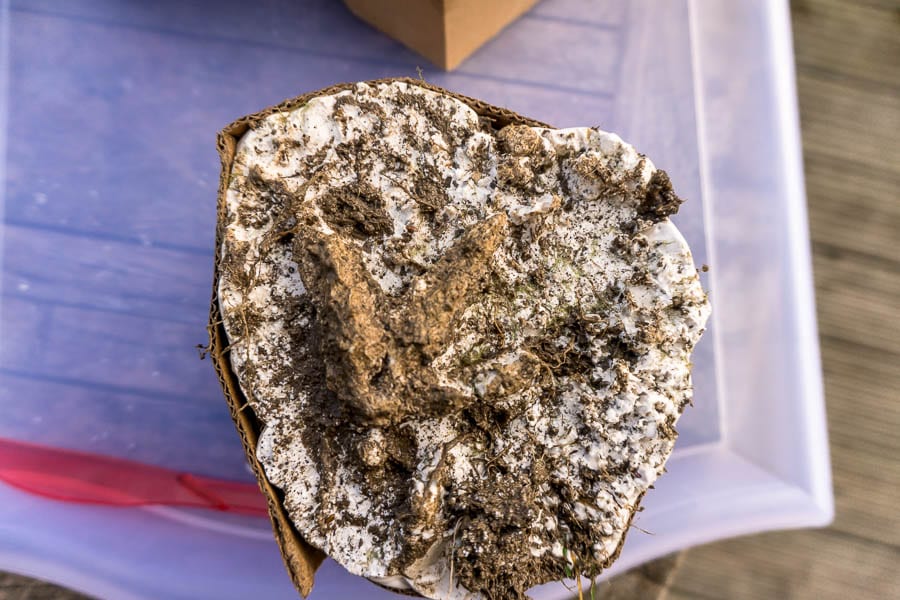 Dry out and clean
Dry out and clean
Once the moulds were dry and hardened we gave them a gentle scrub to remove any remaining dirt and debris. I’m going to save some old toothbrushes for our next casting session to help clean off any remaining mud.
So far we’ve also painted one of the footprints to help measure and identify the animal track. Luce and Theo are still trying to come to a compromise on who gets to paint the pheasant or the deer impressions.
Identify the tracks
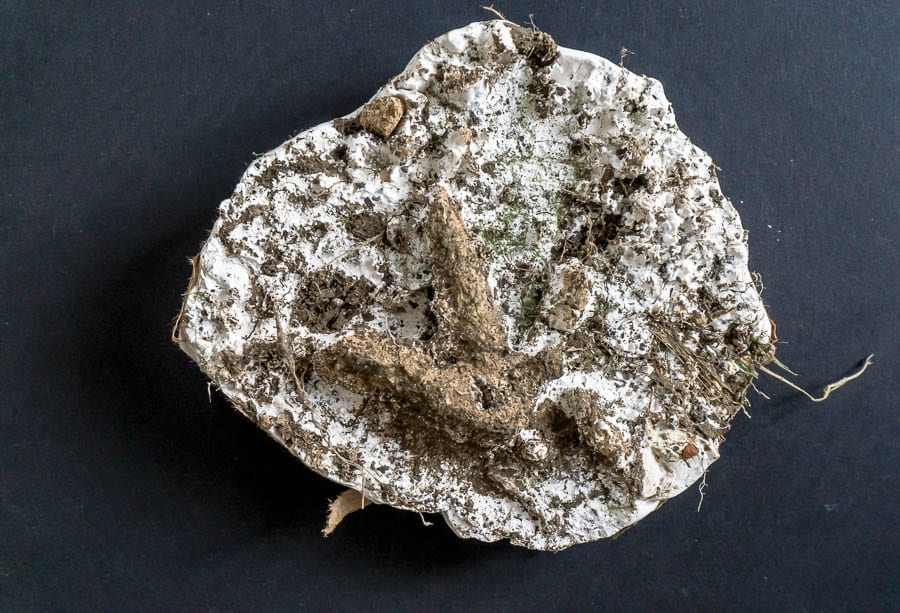 The pheasant cast was easy to identify especially as we knew a nide of pheasants often wander around here. (By the by, ‘nide’ is the collective noun for a large group of pheasants on the ground. I have a thing about animal collective nouns!)
The pheasant cast was easy to identify especially as we knew a nide of pheasants often wander around here. (By the by, ‘nide’ is the collective noun for a large group of pheasants on the ground. I have a thing about animal collective nouns!)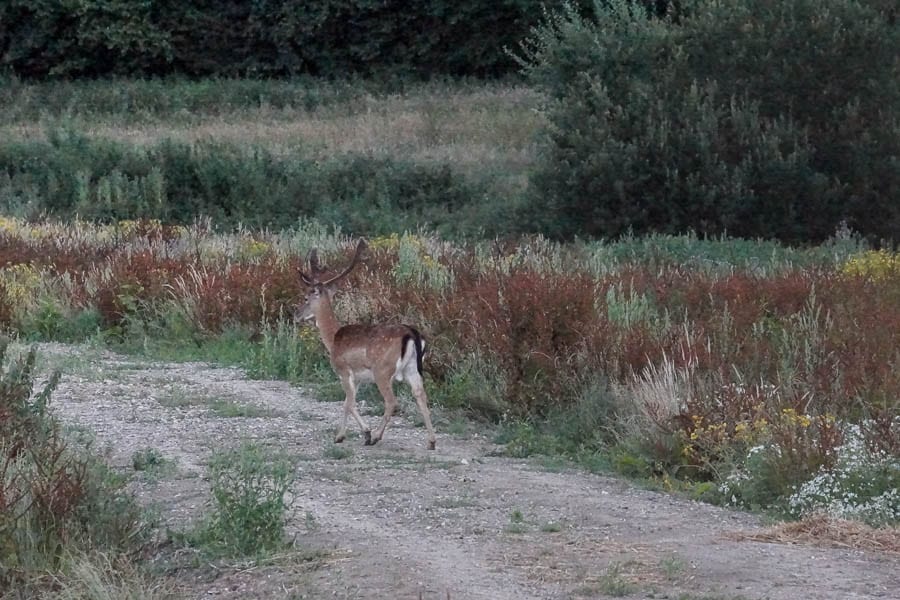
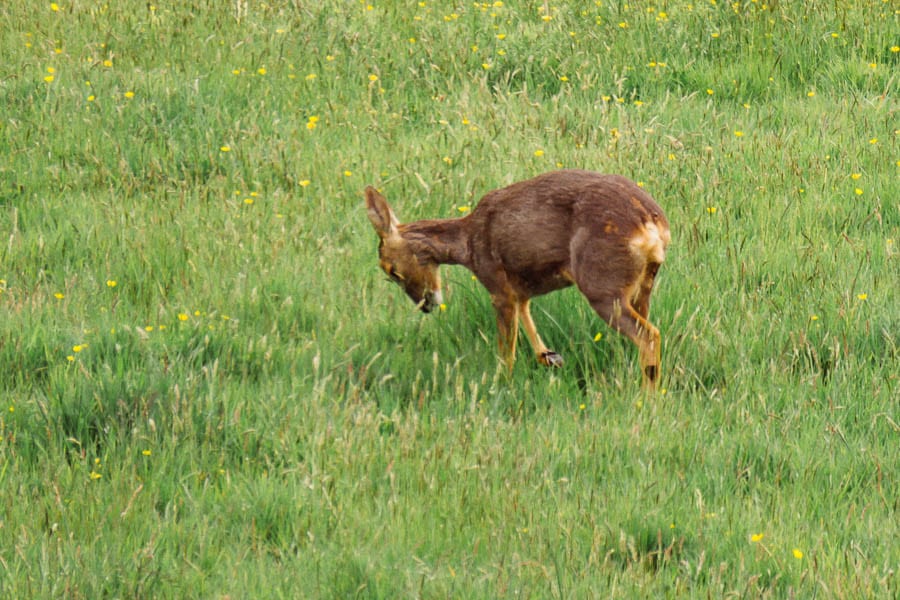 On purpose we had chosen small deer tracks to cast. Herds of Fallow deer often cross this field but their hooves leave much larger imprints in the mud. There are also Roe deer and Muntjac deer where we live.
On purpose we had chosen small deer tracks to cast. Herds of Fallow deer often cross this field but their hooves leave much larger imprints in the mud. There are also Roe deer and Muntjac deer where we live.
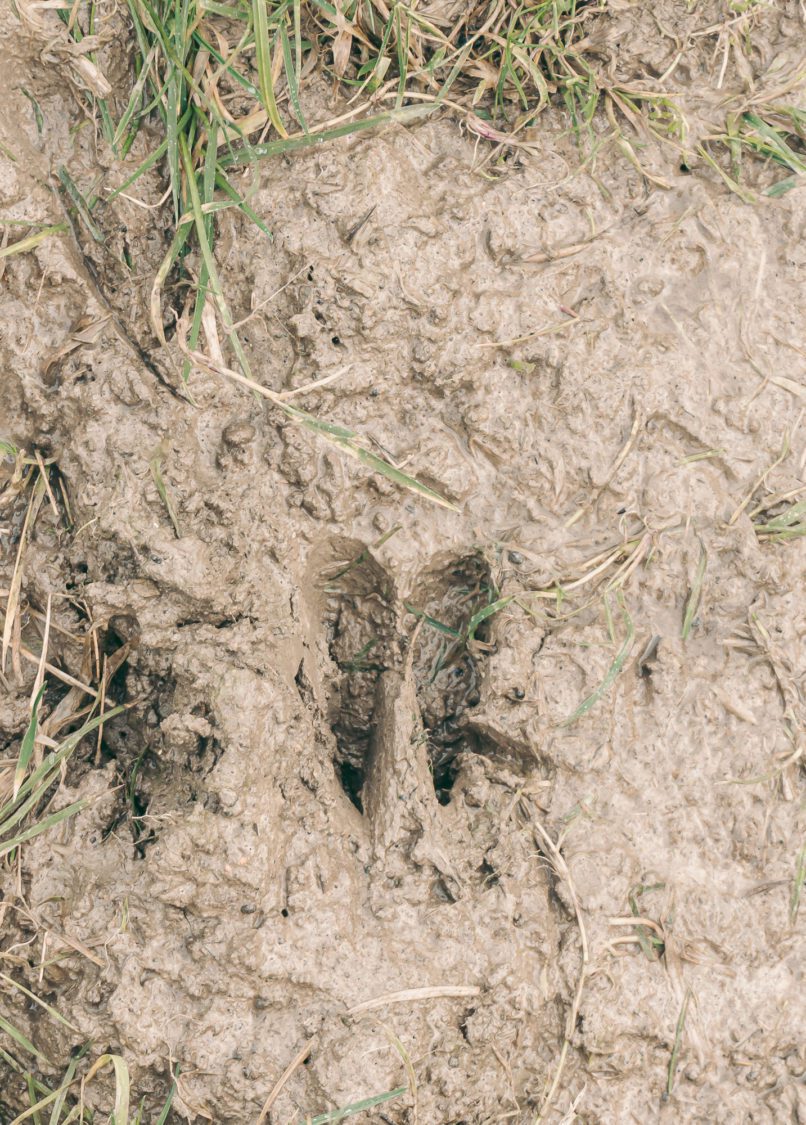
We measured the animal track in the mould and it was 4.5 cms long and 3 cms wide. We had made a cast of a Roe deer track! Roe deer tracks are narrower and pointed in the ends with an average adult length of 4-5 cms and width of 3-4 cms. Muntjac tracks are around 2.5 cms long while Fallow deer are about 6 cms long.
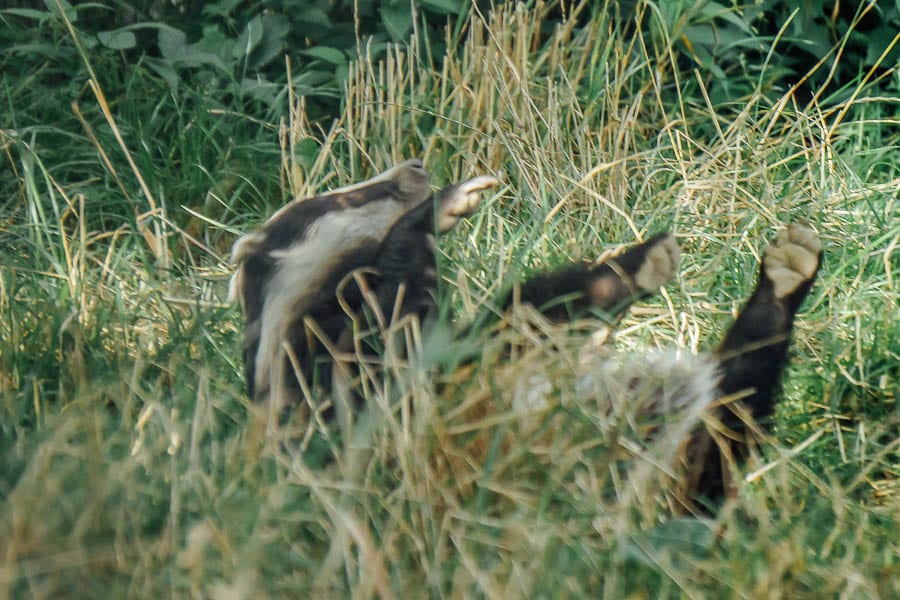
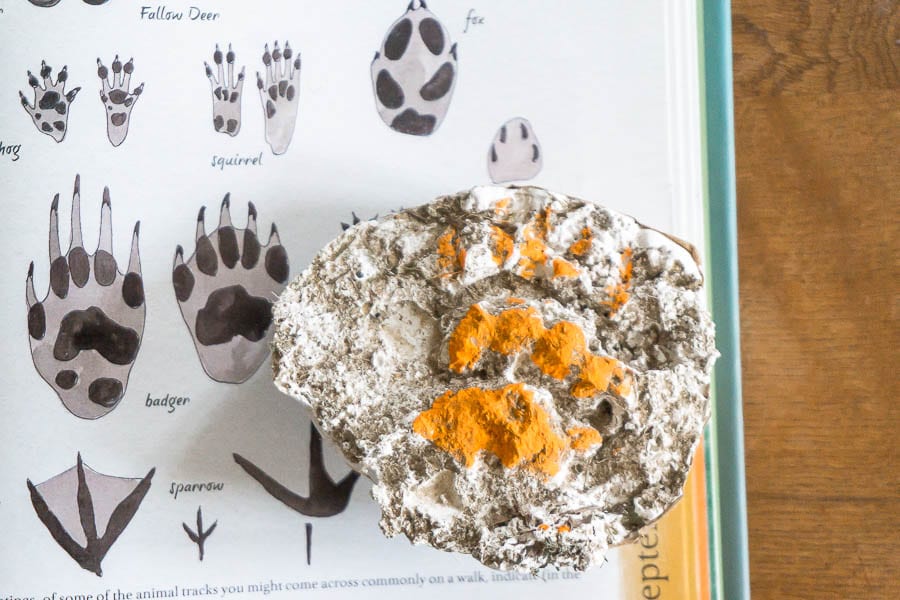 Once we had made the cast and looked at the raised impression we quickly learnt that our last animal track was definitely not a fox. It looks like we had found a badger by the shape of the tracks!
Once we had made the cast and looked at the raised impression we quickly learnt that our last animal track was definitely not a fox. It looks like we had found a badger by the shape of the tracks!
I’d been told that badgers frequent this patch of meadow next to our garden and we finally had proof. In my wonderful book An Illustrated Country Year there’s a page illustrating animal tracks for us to compare. As you can see above, I also found a photo of a badger I had taken in the past with its paws up in the air.
One lesson we learnt when the moulds were ready was that we should have spent some more time brushing away the debris around the animal tracks before enclosing them with cardboard rings. However it was a very chilly winter day and small hands were freezing. After all practice makes perfect.
It was also healthy and good for my twins to play in mud as I explain the benefits here.
The bottom line was that it was easy and fun for my kids learning how to make animal tracks.
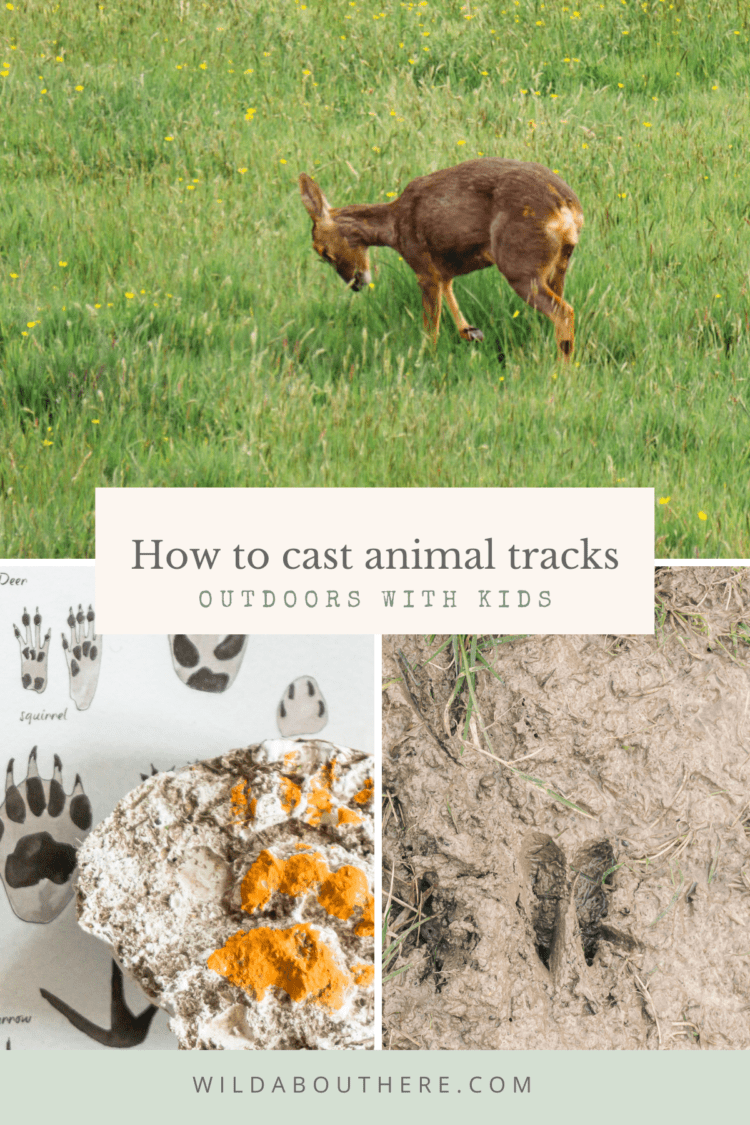
For me the best bit was seeing the amazed expressions on Luce and Theo’s faces when we lifted the casts and they first saw the moulded footprints. We’re already planning more casting sessions. Luce wants to find a really clear badger track to cast. Theo wants to see what other animal we can find in the woods. And I want a warm and sunny Spring day – of course, after a rainfall to ensure we’ll find plenty of tracks in the mud. Sounds like a perfect excuse to bring along a picnic next time to enjoy while we wait for the plaster moulds to set.
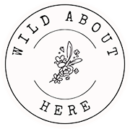
Wow! I SO love this post. This is will a good activity – thank you for sharing. I’m sure Olivia will love this. Your Photos are always magical
Thank you so much Melody. Mine are already nagging me to do some casting again!
You are so lucky to have so many animals near to where you live. What a brilliant activity to share with Luce and Theo x
Looks a great fun activity! My two would no doubt love to give it a go.
What a fantastic idea as an activity!
Love it. xx
What a great activity and so much to take from it too #CountryKids
Thank you Mary 🙂
Wow. Love this activity. When T is older (she doesn’t have much patience at the moment), would love to do this with her. Perhaps, I’ll do it on my own and she’s welcome to join me if she wants 😉 #countrykids.
You can always get T to help you identify the casts you’ve made and then paint them!
I love this post! I am amazed at how quickly the plaster sets – I thought you would end up having to leave them for hours, but this is such a nice way to add some more interest to a walk and help kids to learn about wildlife.
It doesn’t take long for it to harden enough to take home, but you need to let it dry for at least another 24 hours at home. Also add plaster to water, not the other way around, and slowly mix it until it’s like pancake batter.
What a fantastic idea, my girls would love to do this 🙂 #countrykids
So glad to hear you like the idea – I’m sure they’ll have fun if they try it.
What a fun thing to do! I think my daughter would love this. It’s good that you were able to work out what the animals were and you’ve learned some lessons for next time.
I love how you put this post together and that you shared the things you would do differently next time. I think the results are really great just as they are and you have so much wildlife on your doorstep it makes this a perfect activity. Our farm is not short of a little mud at the moment so we might just give it a go taking on board some of your tips. Thank you for sharing with me on #CountryKids
It really does give animal tracks a fun twist for kids while helping them to learn which animal left its mark. I’d always wanted to do this with my twins but was a bit nervous about getting it right which is why I thought it’s actually better to reveal the ups and downs – and that actually it’s not hard to do even if you make mistakes the first time round!